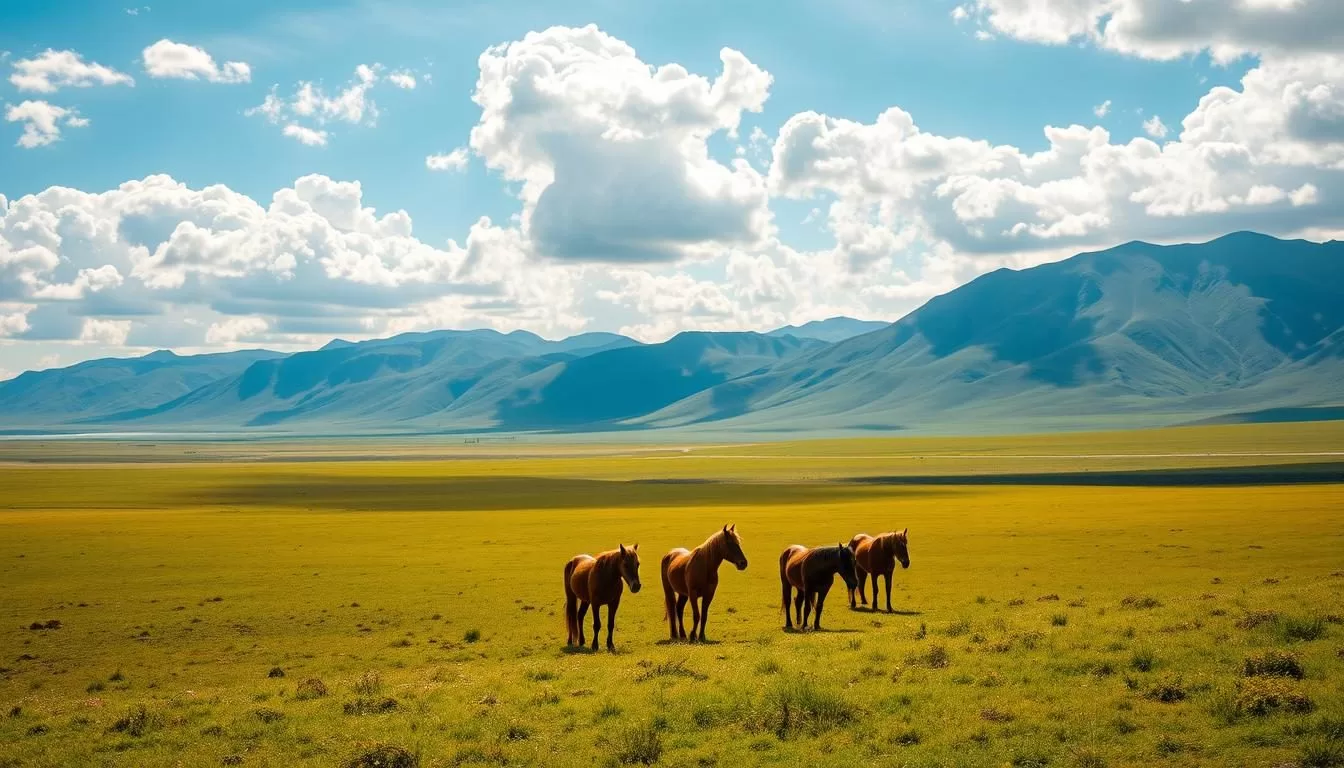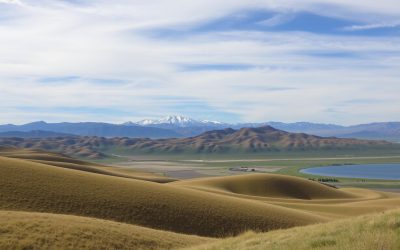Are you planning a trip to Mongolia, a country known for its extreme continental climate and nickname, “The Land of the Blue Sky”? With 230-260 days of sunshine annually, Mongolia is a destination that requires careful planning to make the most of your travel experience.
The country’s unique weather patterns significantly impact travel throughout the year. Visiting during the summer season, between mid-June and late August, offers sunny days and lush green scenery due to minimal rain.
Understanding the best time to visit is crucial for an optimal experience. Each season in this vast country offers unique experiences and activities tailored to different types of travelers. In this guide, we’ll explore the optimal time to visit Mongolia, ensuring you’re well-prepared for your adventure.
Understanding Mongolia’s Extreme Continental Climate
Mongolia’s climate is characterized by its extreme continental conditions, shaped by its landlocked geography. This results in a climate with significant seasonal variations, making it a fascinating destination for travelers who are prepared for the extremes.
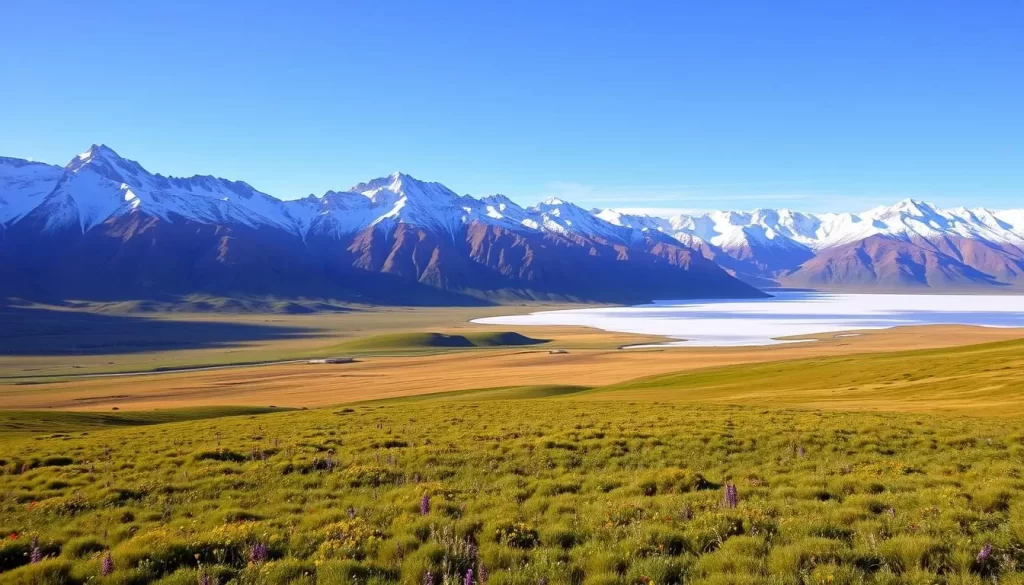
The Land of Blue Sky
Mongolia is often referred to as the “Land of Blue Sky” due to its 230-260 annual days of sunshine. This phenomenon is a result of its high altitude and low humidity, making it an attractive destination for travelers seeking sunny conditions. The abundant sunshine is a defining feature of Mongolia’s climate, contributing to its unique weather patterns.
Temperature Extremes
The country’s temperature varies widely between summer and winter. In the summer, temperatures can soar to 40°C in the Gobi Desert, while in the winter, they can plummet to -40°C across the country. Understanding these temperature extremes is crucial for planning a visit.
Regional Climate Variations
Mongolia’s climate varies significantly across different regions. The Gobi Desert in the south is arid and hot during the summer, while the northern mountains are cooler and more temperate. The country’s diverse geography, including its elevation, plays a significant role in shaping its regional climate variations and overall weather conditions.
By understanding these aspects of Mongolia’s climate, you can better plan your trip and make the most of your travel experience in this unique and fascinating country.
Summer in Mongolia: Peak Season Adventures (June-August)
Experience the best of Mongolia during the summer months, from the Naadam Festival to outdoor adventures.
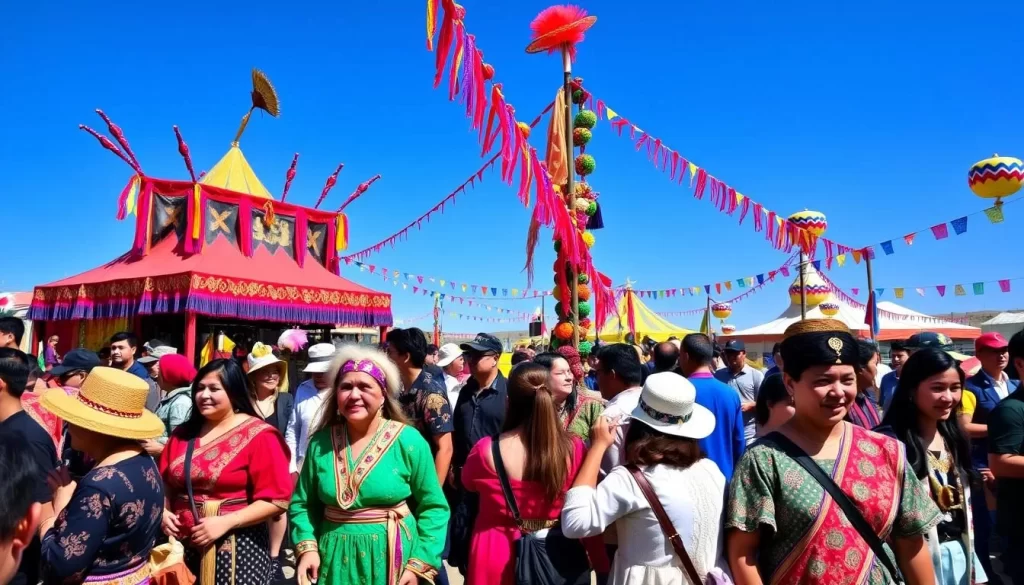
Weather Patterns and Temperature Ranges
Summer in Mongolia brings comfortable temperatures, ranging from 20°C to 25°C, making it ideal for first-time visitors. However, regional variations are significant, with the Gobi Desert reaching up to 40°C and the northern mountains remaining cooler.
The dry conditions in the central and southern regions contrast with the cooler temperatures in the mountains and northern areas, especially in August.
The Naadam Festival: Mongolia’s Olympic-Style Celebration
July is the perfect time to witness the Naadam Festival in Ulaanbaatar, a premier cultural event showcasing traditional “three manly sports” competitions. This Olympic-like celebration is a must-experience, occurring annually from July 10-12.
Beyond the capital, various provinces and soums (small administrative districts) host their own Naadam festivals, offering travelers a chance to experience authentic, less crowded celebrations.
Best Summer Activities
Summer is perfect for camping, horseback riding, and hiking amidst Mongolia’s lush green landscapes and wildflowers. It’s also an excellent time for cultural immersion with nomadic families, providing a unique experience.
As you plan your visit, remember to pack for both sun protection and cooler evenings, making the most of your best time to visit Mongolia.
Autumn in Mongolia: Colors and Comfort (September-October)
Mongolia’s autumn season is a hidden gem for travelers seeking fewer crowds and spectacular landscapes. During September and October, the country transforms into a colorful haven with mild temperatures, making it an ideal time to visit.
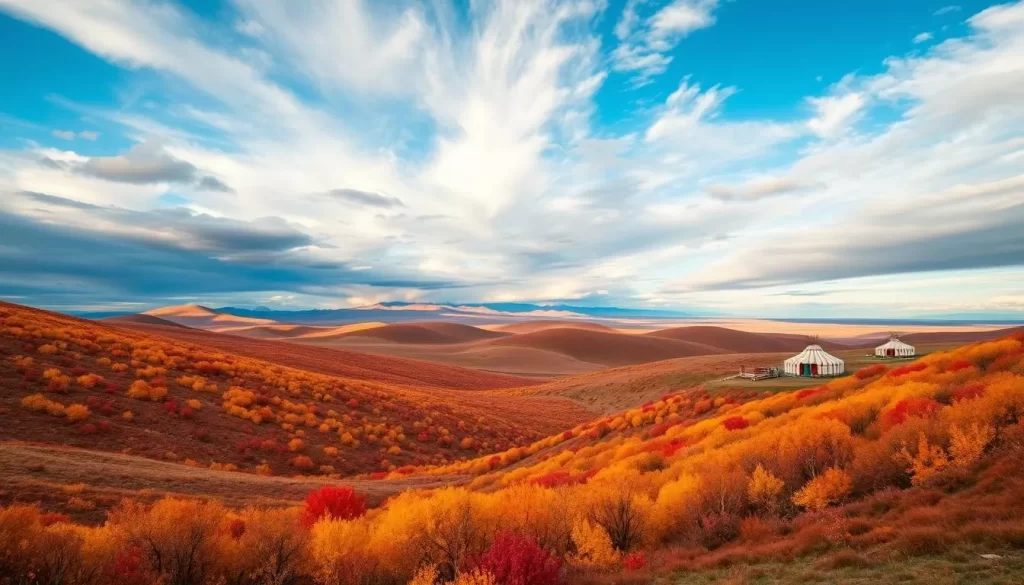
Mild Temperatures and Stunning Landscapes
The autumn season brings a comfortable temperature range of 3°C to 10°C, perfect for exploring the Gobi Desert and other regions that might be too hot during the summer. The landscapes are particularly stunning, with the northern forests and mountain regions displaying vibrant autumn colors.
Golden Eagle Festival: Kazakh Traditions
In early October, the Kazakh people in Bayan-Ulgii province celebrate the Golden Eagle Festival, showcasing their traditional hunting skills with eagles. This event is a unique cultural experience, offering insights into the Kazakh heritage.
Ideal Activities for Autumn
Autumn is ideal for Gobi exploration, wildlife spotting, photography, and hiking. The clear skies also make it perfect for astrophotography and stargazing. When packing for your trip, remember to include layers for the occasional cold snaps and potential early snow in the northern regions.
Winter in Mongolia: Embracing the Extreme (November-February)
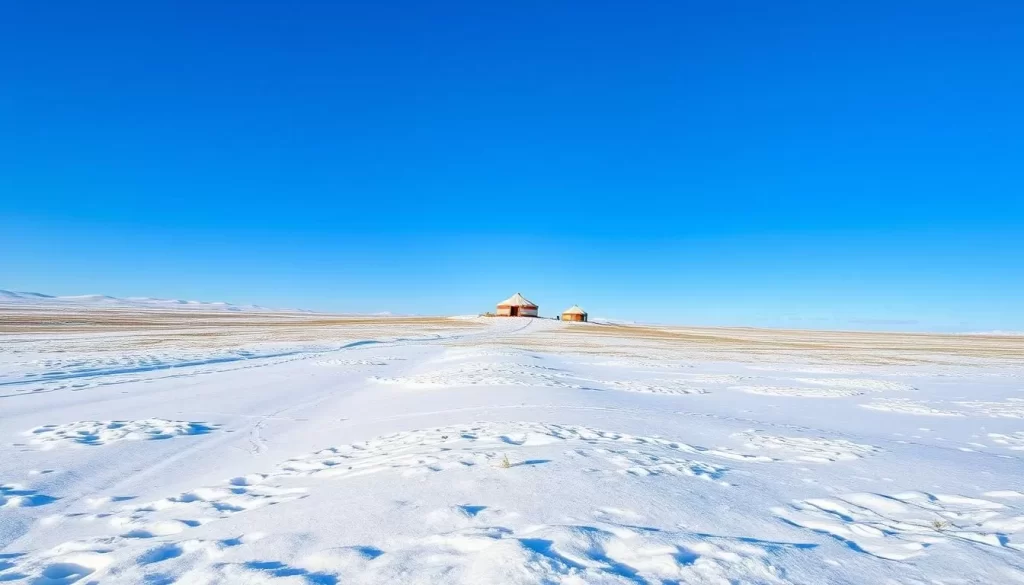
Mongolia’s winter season is a true test of endurance, but for those who brave the cold, it offers a unique and unforgettable experience. The temperatures range from -25°C to -40°C, making it essential to be well-prepared for the harsh conditions.
Surviving the Cold
The extreme cold is a defining feature of Mongolian winters. To make the most of your trip, you’ll need to pack specialized cold-weather gear and understand how to layer effectively. Despite the challenges, the clear blue skies and snow-covered landscapes create a breathtakingly beautiful environment.
Tsagaan Sar: Celebrating Lunar New Year
One of the highlights of Mongolia’s winter is the Tsagaan Sar (Lunar New Year) festival, which takes place in February. This significant cultural event offers a chance to experience authentic Mongolian hospitality and cuisine. You can witness traditional ceremonies and enjoy the festive atmosphere.
Winter Adventures
For adventure seekers, Mongolia’s winter offers a range of exciting activities, including dog sledding, Winter Horse Festival, and snow sports. The Winter Horse Festival features unique competitions, traditional performances, and the opportunity to see rare Mongolian horse breeds.
By embracing the extreme conditions, you can have a truly unique adventure and experience the rich culture of Mongolia.
Spring in Mongolia: Renewal and Rebirth (March-May)
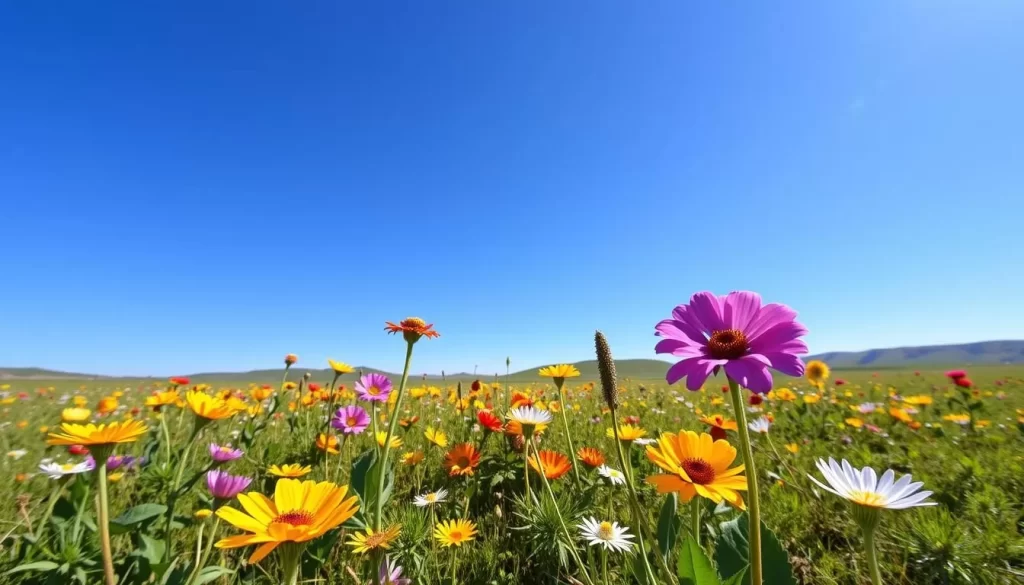
As winter’s chill begins to fade, Mongolia bursts into life with the arrival of spring. This season, spanning from March to May, is characterized by unpredictable weather, with temperatures ranging from 5°C to 15°C. You can experience the famous “four seasons in one day” phenomenon, making spring a thrilling time to visit Mongolia.
Unpredictable Weather
The weather during spring in Mongolia is marked by significant daily fluctuations and regional variations. While it’s dry and sunny in many areas, rainfall occurs in the taiga regions of Khentii and Khuvsgul. You might even witness snowfall in the northern parts of the country. This unpredictability is part of the adventure when you visit Mongolia during spring.
Spring Festivals
Spring is the most thrilling festivals season in Mongolia, worth experiencing. In March, the Gobi hosts the 1,000 Camel Festival, a spectacular event showcasing the region’s iconic camels. Meanwhile, people in Northern Mongolia organize the largest Ice Festival on the crystal-clear frozen Lake Khuvsgul. Various Eagle Festivals are held in different parts of the country, celebrating Kazakh traditions.
Witnessing New Life
Spring is the birthing season for livestock and wildlife, offering you a unique chance to witness new life among nomadic herding families. You can visit national parks to see wildflowers blooming and migrating birds returning to Mongolia, making it an ideal time for hiking and nature experiences.
While spring travel comes with challenges like muddy conditions from melting snow and occasional dust storms, especially in the Gobi region, the rewards are well worth it. To make the most of your experience, pack layers to adapt to the rapidly changing weather conditions.
Mongolia: Best Months for a Weather-Savvy Trip – Our Recommendations
The best months to visit Mongolia vary based on your interests and what you’re looking for in your adventure. Whether you’re a first-time visitor, a photography enthusiast, an adventure seeker, or someone looking for cultural immersion, Mongolia has something to offer in every season.
For First-Time Visitors: Mid-June to Late August
For those new to Mongolia, the summer months from mid-June to late August are ideal. The weather is pleasant, with sunny days and occasional rain keeping the landscapes lush and green. This period is perfect for experiencing major cultural events like the Naadam Festival.
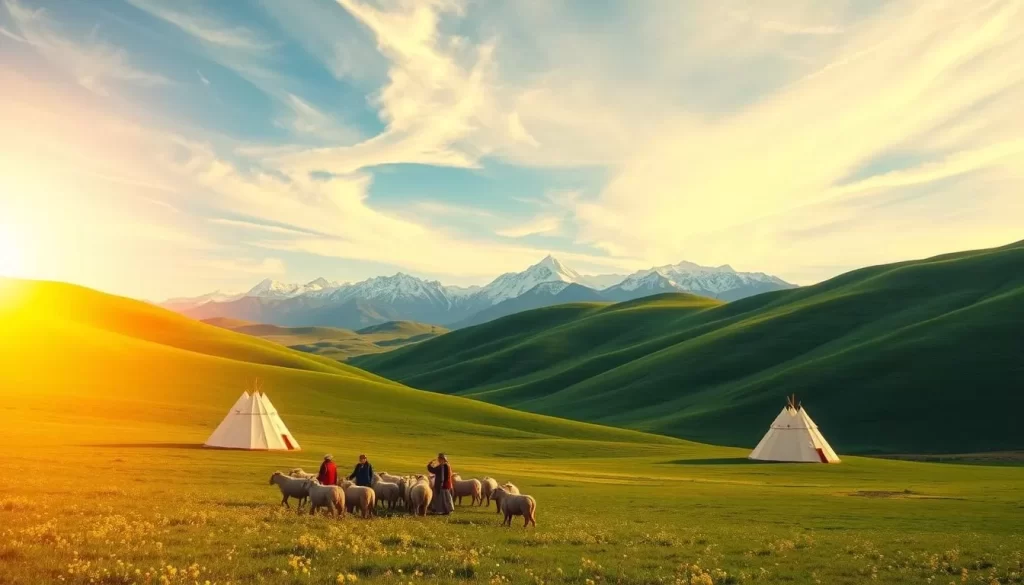
For Photography Enthusiasts: September-October
If photography is your passion, consider visiting in September or October. The autumn colors, golden light, and clear skies make it an ideal time to capture Mongolia’s stunning landscapes.
For Adventure Seekers: Winter Months for the Brave
For those looking for a unique adventure, the winter months (November-February) offer experiences like dog sledding and the Tsagaan Sar festival, showcasing the resilience of Mongolian nomads in the harsh winter.
For Cultural Immersion: Aligning with Major Festivals
Travelers seeking cultural immersion should plan their trip around major festivals. Aligning your visit with events like the Naadam Festival or the Golden Eagle Festival can provide a deeper understanding of Mongolian culture.
By choosing the right month and season for your visit, you can tailor your Mongolian adventure to your interests, ensuring a memorable and enriching experience.
Packing Essentials for Mongolia’s Diverse Climate
To make the most of your Mongolian adventure, it’s crucial to pack wisely for the country’s varied weather conditions. Mongolia’s climate is known for its extremes, ranging from scorching heat to freezing cold, making preparation key to a successful trip.
Year-Round Necessities
Regardless of when you visit, certain items are essential. High-quality sunglasses and strong sunscreen are must-haves due to Mongolia’s high elevation and clear skies, which intensify UV exposure. Versatile layering pieces are also crucial, as they allow you to adjust to changing temperatures throughout the day.
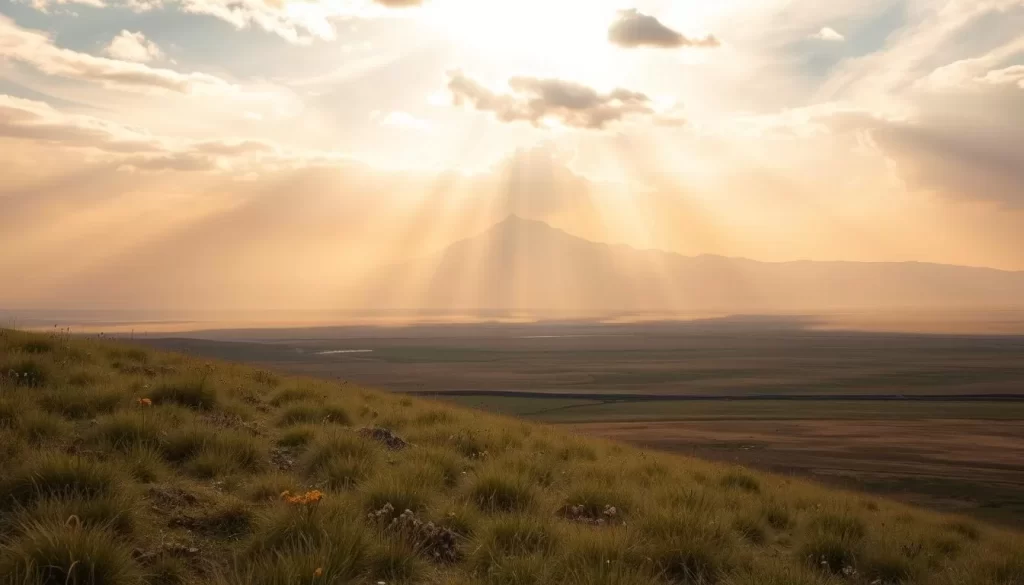
Season-Specific Clothing and Gear
The type of clothing and gear you need varies significantly with the season. For summer, pack lightweight, breathable clothing with layers for cooler evenings. In spring and autumn, warm layers with waterproof outer shells are necessary. For winter, specialized extreme cold weather gear is a must, including insulated, waterproof boots and warm, layered clothing.
Tech and Health Essentials
In addition to clothing, don’t forget tech essentials like power banks, camera gear protection for dust and cold, and appropriate adapters. For health, pack first aid supplies, medications, and items for dealing with altitude sickness, extreme temperatures, and stomach issues. Being prepared will help ensure your trip is enjoyable and stress-free.
Regional Weather Guide: Where to Go When
The vast and varied landscapes of Mongolia are best explored when you know the optimal visiting times for each area. Mongolia’s diverse climate zones require a region-by-region breakdown to plan your trip effectively.
Ulaanbaatar and Central Mongolia: Best Visiting Windows
The capital region is accessible from May to October, avoiding the extreme cold and limited tourist infrastructure of winter months. During this period, you can enjoy the city’s cultural attractions and the surrounding landscapes.
Gobi Desert: Optimal Exploration Periods
The Gobi Desert is most comfortable to explore during spring (May) and autumn (September-October), when temperatures are more bearable. Summer can be extremely hot, making these shoulder seasons ideal for desert adventures.
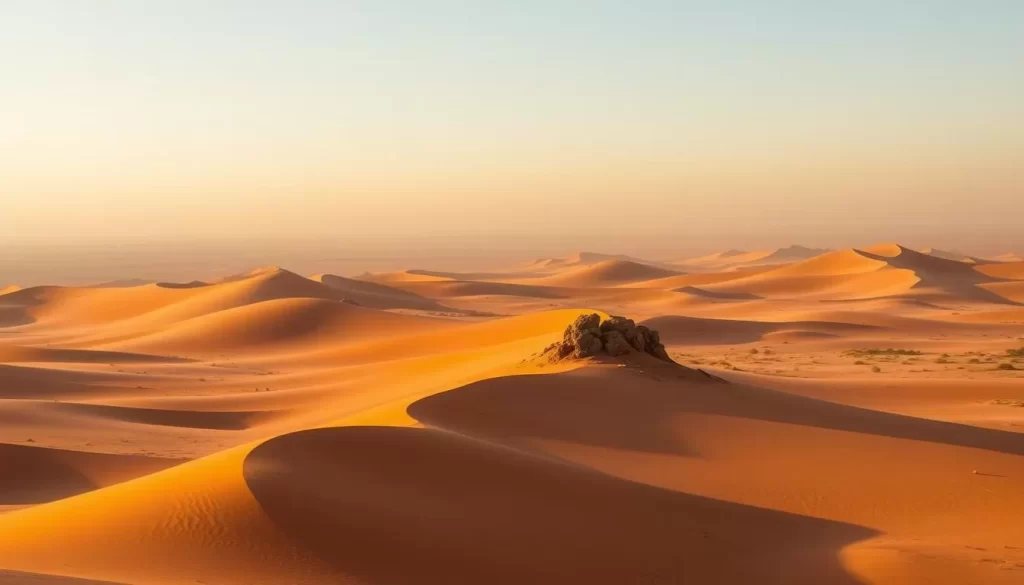
Northern Mountains and Lakes: Weather Considerations
The Northern Mountains and Lakes region, including Khuvsgul, is most accessible during the short summer window (June-August). September offers fewer crowds but cooler temperatures, making it another good option for those who prefer milder weather.
Western Mongolia: Timing Your Visit to Kazakh Eagle Hunter Territory
For Western Mongolia, particularly the Kazakh Eagle Hunter territory, September-October is recommended to coincide with the Golden Eagle Festival. Summer is also a good time for general exploration of the region.
| Region | Best Time to Visit | Weather Conditions |
|---|---|---|
| Ulaanbaatar and Central Mongolia | May-October | Mild temperatures, accessible infrastructure |
| Gobi Desert | May, September-October | Comfortable temperatures, fewer crowds |
| Northern Mountains and Lakes | June-August, September | Accessible, fewer crowds in September |
| Western Mongolia | September-October, Summer | Golden Eagle Festival, general exploration |
By planning your visit according to these regional weather guides, you can make the most of your time in Mongolia and enjoy the diverse landscapes and cultural experiences it has to offer.
Conclusion
From the Gobi Desert to the northern mountains, Mongolia’s varied climates offer something special for every kind of traveler. As we’ve explored, the country’s diverse landscapes and cultural experiences are shaped by its extreme continental climate. Summer (June-August) is generally considered the best time to visit for most travelers, especially first-timers, due to comfortable weather and accessibility to all regions.
However, each season offers unique experiences: spring blooms and autumn colors are perfect for scenic tours, while winter transforms the landscape into a snowy wonderland. Regardless of when you visit, careful planning is essential due to Mongolia’s extreme climate and developing tourism infrastructure. By aligning your travel plans with your interests, whether it’s photography, cultural festivals, or adventure activities, you can have a memorable and enriching experience in this incredible destination.
